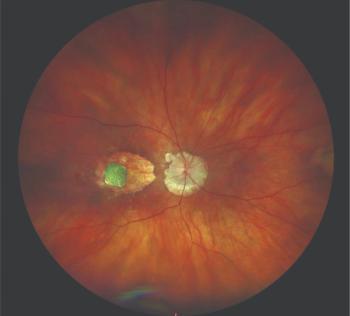
Normal-tension glaucoma is defined as a type of primary open-angle glaucoma
Normal-tension glaucoma (NTG) is a form of primary open-angle glaucoma (POAG) in which there is no known history of statistically elevated IOP; however, the definition of an upper limit of normal IOP is arbitrary. POAG is a multifactorial disease process with pressure-dependent and pressure-independent etiologic factors. In NTG, the pressure-independent factors likely play a more substantial role.
Key Points
Atlanta-Glaucoma specialists disagree on whether normal-tension glaucoma (NTG) and primary open-angle glaucoma (POAG) are different diseases. However, that debate must be entered with well-established definitions, according to Angelo P. Tanna, MD, director, Glaucoma Service, Feinberg School of Medicine, Northwestern University, Chicago. Dr. Tanna was the opening speaker in a series of presentations on NTG during glaucoma subspecialty day at the annual meeting of the American Academy of Ophthalmology.
To define NTG, it is necessary to start by defining glaucoma, which is a group of diseases with a shared final common pathway of optic neuropathy characterized by progressive retinal ganglion cell loss, optic disc excavation, and corresponding vision loss, Dr. Tanna said.
The hallmark of glaucoma is the presence of excavation or cupping of the optic nerve, a feature that uncommonly occurs in nonglaucomatous optic neuropathies.
"It follows that NTG is POAG that occurs in the absence of a known history of statistically abnormal IOP," Dr. Tanna said.
The generally accepted upper limit of normal IOP is 21 mm Hg; however, this is an arbitrary upper limit based on the mean IOP plus two standard deviations. Incidentally, he added, mean IOP is significantly lower among the Japanese, as was recently demonstrated in a large population survey conducted in Tajimi, Japan.
"We know that many individuals who have pressures higher than 21 mm Hg, regardless of their corneal thickness, do not develop glaucomatous optic neuropathy even when followed for long periods," Dr. Tanna said. "The important thing to recognize is that this upper limit of normal is arbitrary. If a patient develops glaucoma at a pressure of 20 mm Hg, should we really consider this person to have a different disease from one who develops glaucoma at a pressure of 22 mm Hg?"
He noted that the optic nerve, as observed with slit-lamp biomicroscopy, changes in response to disease processes in a limited number of ways: excavation (or cupping), pallor, and swelling.
"It is naïve to think that only one disease mechanism can lead to excavation," Dr. Tanna said. "More likely, many different molecular and cellular abnormalities conspire to result in what we call glaucomatous optic neuropathy.
"It is safe to assume that at lower IOPs, the pressure-independent types of mechanisms tend to predominate, whereas at higher IOPs, pressure-dependent mechanisms probably tend to predominate," he added.
"I would define NTG as a progressive optic neuropathy; it is a form of POAG that occurs in individuals in whom there is an absence of a history of statistically elevated IOP, with the understanding that the upper limit of normal is intrinsically arbitrary, and that pressure-independent factors may play a more substantial role than in patients with high-tension POAG," Dr. Tanna concluded.
Newsletter
Don’t miss out—get Ophthalmology Times updates on the latest clinical advancements and expert interviews, straight to your inbox.





